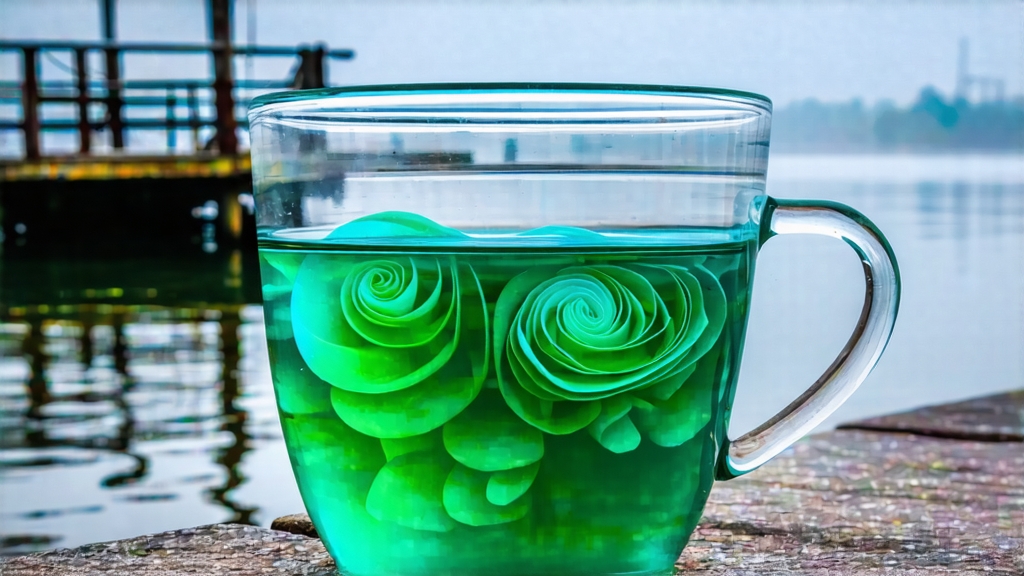
Among the jade pantheon of Chinese green teas, none carries the romance of lake mist and imperial whim quite like Biluochun. Born in the fog-locked hills that cradle Taihu Lake in Jiangsu Province, its name translates literally to “Green Snail Spring,” a poetic compression of shape and season that foreigners often mispronounce yet never forget once tasted. For more than a thousand years these tiny spirals have been the first green tea offered to the emperor’s palate each spring, and today they remain the opening chord of China’s green tea symphony on global counters.
Legend places the tea’s birth during the late Tang dynasty, when a tea-picking girl trapped a small green snail inside her basket. Overnight the creature’s aromatic slime perfumed the leaves so beguilingly that local monks copied the scent by pan-firing the buds against a hot bronze wok. Science now credits the fragrance to an extraordinary coexistence: thirty percent of the mountain’s slopes are planted with peach, plum, loquat and apricot trees whose blossoms fall like snow onto the tea hedges, donating volatile esters that the leaf absorbs while still embryonic. Whatever the truth, the imperial court of the Kangxi Emperor (1662-1722) christened the tea “Scary Fragrance” (Xia Sha Ren Xiang) until the ruler, unsettled by the ominous name, rechristened it Biluochun, immortalizing both its curl and its birthplace.
Strictly speaking, only leaf picked within a 5-kilometer radius of Dongting Mountain’s East and West peaks can claim the protected name. Within that micro-zone, three grades are recognized by the trade. Supreme First Pick (Tou Cai) is plucked on the first three days of the lunar spring, when each hillside is still cold enough to keep the bud’s chemistry locked in high notes of linalool and geraniol. Fine Spirals (Jing Luo) follows for the next five days, offering a slightly broader leaf and a creamier body. Fragrant Spring (Xiang Chun) closes the season, larger yet still aromatic enough to outclass most other green teas on the planet. All grades share one visual signature: a downy silver tip wrapped so tightly that it resembles a snail sleeping in its shell.
The craft that creates this spiral has changed less than the Taihu mist. At 4:30 a.m., when mountain dew keeps the cell walls brittle, pickers break every rule tourists imagine about “two leaves and a bud.” Biluochun demands only the kernel: an unopened bud sheared at the hypocotyl, no longer than 2.5 cm and weighing no more than 0.3 g. By 7 a.m. the baskets descend to the village alleyways where master kill-green artisans wait beside woks heated to 180 °C. A 250 g batch is tossed against the iron, clattering like dry beans while the picker-turned-fryer flexes wrists in a figure-eight motion that lasts exactly 3.5 minutes. The heat deactivates polyphenol oxidase, locking in the jade hue, while the mechanical pressure begins the curl. Without pause the leaves move to a second wok at 70 °C for “first rub,” a gentle kneading that coaxes the bud to bend inward. A third wok at 50 °C performs “second rub and final shape,” during which the artisan’s fingers roll the leaf against the iron in a spiral stroke so precise that veteran workers can identify each other by the twist signature alone. When the moisture falls to 6 %, the snail is born: silver tipped, jade bodied, and fragrant enough to perfume an entire room before water ever meets leaf.
Water, however, is where many foreign drinkers undo centuries of craftsmanship. Biluochun’s cell structure is so tender that boiling water scorches the amino acids, turning the liquor brown and the taste sullen. The classic Taihu formula calls for mountain spring water at 75 °C, but mineral waters low in bicarbonate (TDS < 100 ppm) work abroad. Glassware is preferred; the spiral needs an audience. Three grams—about forty snails—are dropped into a 250 ml tall glass. Water is poured first, leaves second, the reverse of most Chinese greens, so that each curl parachutes down in slow motion, shedding silver fuzz that drifts like underwater snow. After thirty seconds 70 % of the buds will stand